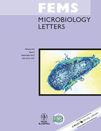Comparative sensitivity of four different cell lines for the isolation of Coxiella burnetii
Abstract
Coxiella burnetii is an obligate intracellular bacterium that causes the disease Q-fever. This is usually diagnosed by serology (immunofluorescence assay) and/or PCR detection of C. burnetii DNA. However, neither of these methods can determine the viability of the bacterium. Four different cell lines were compared for their ability to amplify very low numbers of viable C. burnetii. Two different isolates of C. burnetii were used. For the Henzerling isolate, DH82 (dog macrophage) cells were the most sensitive with an ID 50 (dose required to infect 50% of cell cultures) of 14.6 bacterial copies. For the Arandale isolate, Vero (monkey epithelial) cells were the most sensitive with an ID 50 of less than one bacterium in a 100-μL inoculum. The Vero cell line appeared highly useful as vacuoles could be seen microscopically in unstained infected cells. The findings of this study favour the use of Vero and DH82 tissue culture cell lines for isolation and growth of C. burnetii in vitro. The other cell lines, XTC-2 and L929, were less suitable.




